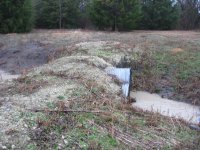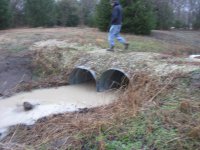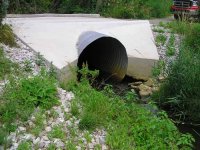TomPenny
Bronze Member
Hey folks, long time. Harv saw you the other day in downtown Royse City. I can spot that truck a mile a way.
Anyways I am struggling a little bit with a customer's property. He has a creek/run off in back of his property and his bridge pretty much washed out.
I think part of the problem is the culverts are too short. Infact only one may needed but longer.
A better option may be to build concrete sides around the culverts and top off with dirt/gravel.
I know a bunch of you guys have been there done that. So what do you think? Of course budget is an issue but not so much that I can't fix it the right way.
Anyways I am struggling a little bit with a customer's property. He has a creek/run off in back of his property and his bridge pretty much washed out.
I think part of the problem is the culverts are too short. Infact only one may needed but longer.
A better option may be to build concrete sides around the culverts and top off with dirt/gravel.
I know a bunch of you guys have been there done that. So what do you think? Of course budget is an issue but not so much that I can't fix it the right way.



